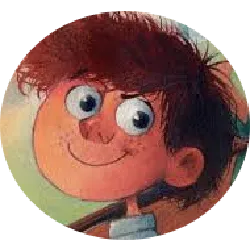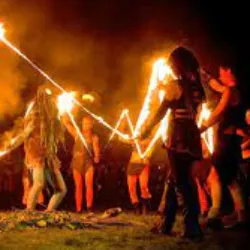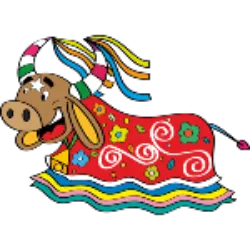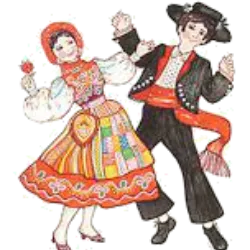The Symbol of Smartness and Resilience

João Grilo, one of the most striking characters in Brazilian folklore, is widely recognized for his cunning, humor and ability to overcome adversity. Portrayed as a humble and seemingly naive "anti-hero", he personifies the creativity and resilience of the working classes, challenging figures of power and challenging situations with intelligence and malice.
Historical Roots and Popularity
Originating from traditional Portuguese tales, João Grilo arrived in Brazil with the cultural influences of the colonial period. Here, he gained local characteristics and became an icon of the northeastern backlands, present especially in cordel literature. Stories such as Palhaçadas de João Grilo and Proezas de João Grilo highlight his adventures and conflicts with colonels, clerics and even mystical beings.
Highlight
João Grilo's fame grew exponentially with Auto da Compadecida, a work by Ariano Suassuna released in 1957. The play portrays the character as a sagacious northeasterner who, with humor and intelligence, faces social, religious and cultural issues, criticizing injustices in a light and comic. Its popularity was consolidated with the adaptation of the work for television in 1999 and for cinema in 2000, directed by Guel Arraes.
Saint George, also known as the Warrior Saint

Saint George, also known as the Warrior Saint, is one of the most popular saints in the Christian tradition. He is venerated in both the Catholic and Orthodox Churches, in addition to being revered in other religions, such as Candomblé, where he is syncretized with the orisha Ogum. Associated with a military figure from the 3rd century AD, Saint George is known for his unwavering courage and faith, symbolized by the legend of the confrontation with the dragon, where he defeated the creature to save a princess and her city. His devotion as protector against evil and intercessor in battle is celebrated in festivities around the world, especially on April 23, his liturgical day.
Test yourself with one of these challenges 👇
Discover some interesting facts about Brazilian Folklore
Celtic Origin of Halloween

The oldest origin of Halloween dates back to the Celts, a people who inhabited areas of Ireland, Scotland and Northern France. They celebrated the festival of Samhain, which marked the end of summer and the beginning of winter. Samhain was a celebration to welcome the spirits of the dead back to Earth. The Celts believed that on the night of October 31, the spirits of the past year's dead returned to Earth to visit their former homes and loved ones. In addition to the spirits of the dead, other supernatural beings, including evil spirits, were believed to roam the Earth as the barriers between the real and supernatural worlds were weakened. People lit fires and wore scary clothes to scare away malevolent spirits. People also disguised themselves by wearing masks to avoid being recognized by malevolent spirits. Additionally, one way to ward off evil spirits was to carve scary faces into turnips.
The Pink Dolphin is a legend of Brazilian folklore

The Pink Dolphin is a legend of Brazilian folklore. The legend is particularly popular in the Amazon region of Brazil. Legend often narrates that, during festive nights, especially during the São João festivities, dolphins emerge from the rivers and transform into young, attractive men. They wear white clothes and hats to hide the tops of their heads, which remain pink. These disguised dolphins attend parties, dance and seduce women. The legend includes many accounts of pregnant women who claim to have been seduced by these male-transformed porpoises. In some versions of the legend, these women marry the dolphins and only discover the truth when the pink dolphin returns to the river. Hence the custom of saying, when a woman has a child from an unknown father, that he is "son of the dolphin".
Cuca is an important figure in Brazilian folklore

Cuca is an important figure in Brazilian folklore, known as a witch who can take the form of an old woman or a sorceress with the head of an alligator. She lives in dark places, like swamps or rivers, and comes out at night to capture children who don't obey their parents or misbehave. The legend of Cuca was popularized in Brazil by the book "O Saci" by Monteiro Lobato, where Cuca is described as a witch with frightening characteristics. In his book "Geografia dos Mitos Brasileiros", Luís da Câmara Cascudo (1898-1986) says that Cuca is a myth of Portuguese origin related to Santa Coca, a figure who appeared in processions in the province of Minho, in Portugal.
The legend of the werewolf arose in Greece

The legend of the werewolf arose in Greece, which said that the werewolf was a king called Lycaon, who became infamous for his cruelty, murdering all travelers who sought shelter in his home. Zeus disguised himself as a traveler and visited the palace to verify the stories. During dinner, Zeus noticed that Lycaon tried to serve him human flesh, which enraged him. In retaliation, Zeus destroyed Lycaon's palace, cursed him, and turned him into a wolf. According to Brazilian legend, when a mother has 7 daughters and finally a son, this will be a werewolf. Once transformed into a werewolf on the night of the full moon, he goes out looking for victims. In the North, the werewolf would be a man who has poor health with anemia and, once transformed, feeds on the blood of other humans. In the South, the fact that turns a man into a werewolf would be incest. Popular culture has spread that he can only be killed by sharp objects or a bullet made of silver.
The legend of the Headless Mule is a story from Brazilian folklore

The legend of the Headless Mule is a story from Brazilian folklore, also known as "priest's donkey." The Headless Mule is a supernatural creature, a type of horse or mule with fire coming out of its neck instead of a head. She recounts the transformation of a woman into a mule with flames for a head, as punishment for intimate involvement with Church priests. The curse occurs on a night from Thursday to Friday, and the Headless Mule remains in that state until the rooster crows. During the transformation, the mule takes on a terrifying form, attacking anyone who crosses its path with powerful kicks. There are variations to the story, but in general, the legend highlights the punishment and terror associated with breaking religious vows and illicit involvement.
Test yourself with one of these challenges 👇
HOME








